Diversity and inclusion in trauma and orthopaedics in the UK
By Caroline B Hing, Giles Pattison, Robert Gregory, Fergal Monsell, Justine Clarke, Lisa Hadfield-Law and Deborah Eastwood
(Full article published in JTO Volume 8, Issue 1, March 2020, pp 52-54. Download the pdf here).
It is well-recognised that a more diverse workforce is associated with improved performance and increased innovation being one particular benefit. Whilst it is accepted that to achieve increased diversity in T&O, many groups currently under-represented in the workforce need to be encouraged to join, the largest by far is the female gender and this article deals predominantly with this group as an example of the challenges we face. Current figures show that surgery in general is not attracting or retaining a gender-diverse workforce. At the present time 55% of medical students are female but by the time a surgeon reaches specialty training that number has reduced to 30% and by consultant it is 13%. Whilst it should be acknowledged that the proportion of female surgeons has increased over the past decade (circa 7% across all grades and circa 5% at consultant level) the rate of change is insufficient to match the demographic changes seen in our medical schools.
T&O is the second largest surgical specialty however it has the lowest proportion of female surgeons across all grades with 7% at consultant and specialty and associate specialist (SAS) grades and 19% at specialty training level1. This suggests that prompt and wide ranging action needs to be taken to address the imbalance and to generate interest in T&O as a career.
The British Orthopaedic Association (BOA) currently has 5,195 members, comprising 1,955 consultants, 402 Post-certificate of completion of training (CCT) doctors, 1,183 trainees, 178 foundation doctors and 198 medical students. In total 11% of BOA membership is female, with similar percentages across the grades of the specialty as a whole.
The gender disparity has slowly improved over the last five years but still shows an under-representation of women across the career grades. An inclusive surgical profession is one that inspires, attracts and retains the best talent from a wide variety of backgrounds. With this aim, orthopaedic associations across the world have started to recognise the strategic importance of actively encouraging diversity2-4.The aim of the BOA is to provide national leadership and a unifying focus supporting our members to deliver excellence in patient care. Diversity within the workforce has been shown to improve patient care. This was acknowledged at the 2019 BOA Congress, where a diversity networking event was held as a lunch time session with representation from Council and members. This was primarily a social event designed to gauge the interest of, and to generate support from, the membership and to learn how best to address the need for change. Following the event, a working group was formed to draft a strategic policy document to be taken to Council before dissemination to a wider focus group comprising key stakeholder representatives from women; black and minority ethnic (BAME); disability groups; lesbian, gay, bisexual, transgender and queer (or questioning) and others (LGBTQ+) and the ‘ageing’ surgeon groups.
The BOA Council was fully supportive of the draft document with a three-year aim for change. Whilst still in draft phase the aims include a commitment to understand and define the groups currently under-represented within the BOA; to increase the diversity of the BOA leadership; to promote diversity at Congress and educational events by increasing the diversity of chairs, speakers and invited guests; to increase awareness of trauma and orthopaedics as a career option; and to provide support and maintain interest throughout a T&O career.
We are fortunate in being able to attract good quality trainees into T&O but the trend in recent years is for a shrinking ‘appointability gap’ and there is a real danger that in the near future we may have unfilled posts at speciality training (ST) ST3. Other specialties, particularly General Practice, Psychiatry and Acute Medicine are less fortunate and their plight may lead to centrally driven measures to attract trainees to those areas. With such measures our ability to recruit may be put under further pressure.
Maintaining the status quo is not an option if our profession is to thrive. To deliver change there needs to be a willingness to change at all levels of the profession. 2020 heralds the start of a new decade and provides the opportunity to alter the face of the BOA to better reflect its membership and society as a whole, to be seen as a dynamic and empathetic organisation that celebrates and values difference and understands that if successful, this will improve performance and the quality of patient care.
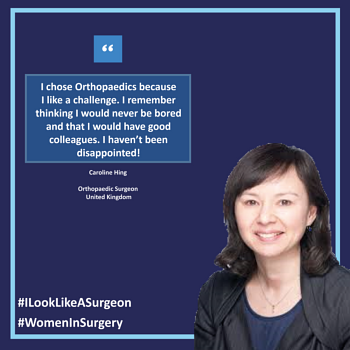
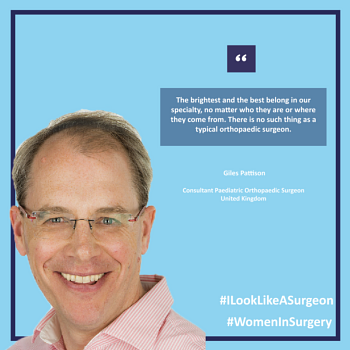
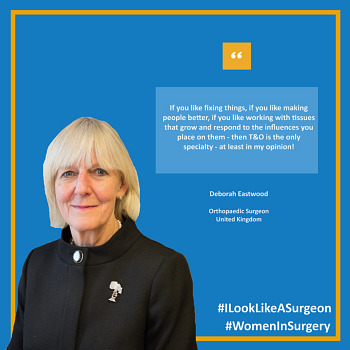
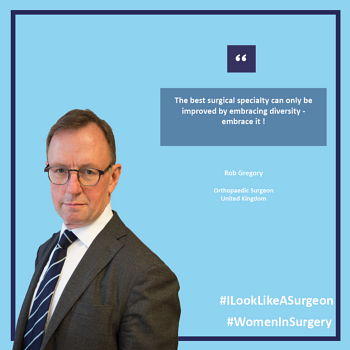
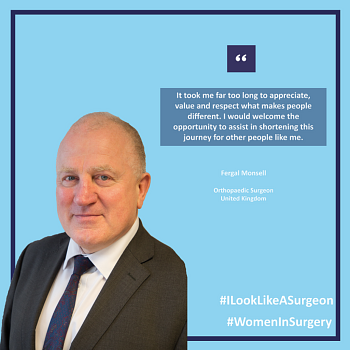
References
- NHS Digital. Medical and Dental staff by gender specialty and grade AH2667. Available at: https://digital.nhs.uk/data-andinformation/find-data-and-publications/ supplementary-information/2019supplementary-information-files/medical-anddental-staff-by-gender-specialty-and-gradeah2667. Accessed January 2020.
- Emery SE, Carousel Presidents. Diversity in Orthopaedic Surgery: International Perspectives: AOA Critical Issues. J Bone Joint Surg Am. 2019:101(21):e113.
- MA Day, JM Owens, LS Caldwell. Breaking Barriers: A Brief Overview of Diversity in Orthopaedic Surgery. Iowa Orthop J. 2019;39(1):1-5.
- Canadian Orthopaedic Association. Gender Diversity Strategic Plan. Available at: https:// coa-aco.org/wp-content/uploads/2019/11/ COA-Diversity-Stategic-Plan-final-21-2019. pdf. Accessed January 2020.
